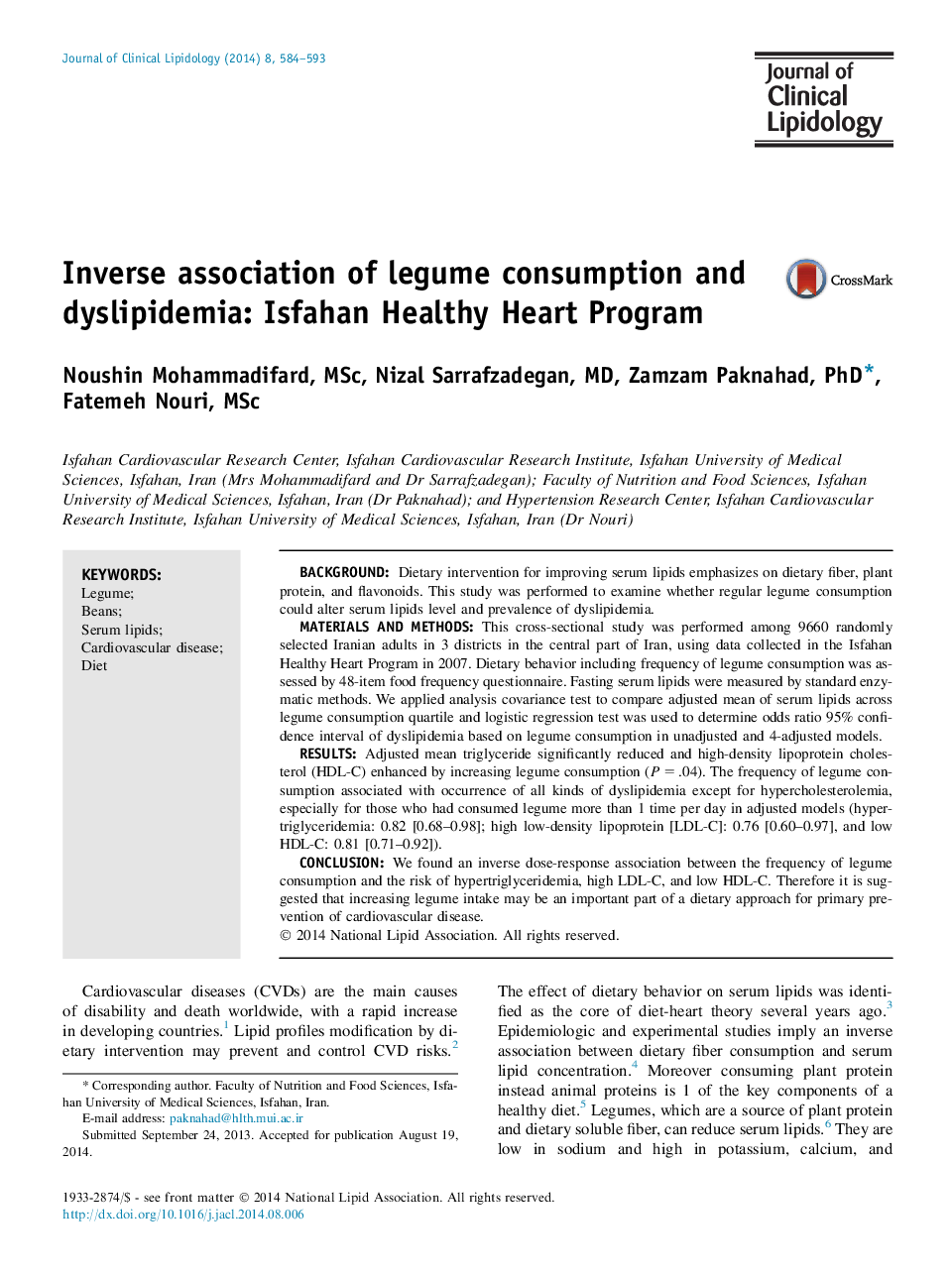| Article ID | Journal | Published Year | Pages | File Type |
|---|---|---|---|---|
| 5985835 | Journal of Clinical Lipidology | 2014 | 10 Pages |
âºLegumes consumption had an inverse association with hypertriglyceridemia, high LDL-C, and low HDL-C.âºNo significant relationship with hypercholesterolemia was found.âºLongitudinal studies or well-designed clinical trial may provide a better level of evidence to assess the effects of legumes on lipid profile.âºShift toward consuming more legumes might be a good and low-cost food to treatment and prevent hyperlipidemia.
BackgroundDietary intervention for improving serum lipids emphasizes on dietary fiber, plant protein, and flavonoids. This study was performed to examine whether regular legume consumption could alter serum lipids level and prevalence of dyslipidemia.Materials and methodsThis cross-sectional study was performed among 9660 randomly selected Iranian adults in 3 districts in the central part of Iran, using data collected in the Isfahan Healthy Heart Program in 2007. Dietary behavior including frequency of legume consumption was assessed by 48-item food frequency questionnaire. Fasting serum lipids were measured by standard enzymatic methods. We applied analysis covariance test to compare adjusted mean of serum lipids across legume consumption quartile and logistic regression test was used to determine odds ratio 95% confidence interval of dyslipidemia based on legume consumption in unadjusted and 4-adjusted models.ResultsAdjusted mean triglyceride significantly reduced and high-density lipoprotein cholesterol (HDL-C) enhanced by increasing legume consumption (PÂ =Â .04). The frequency of legume consumption associated with occurrence of all kinds of dyslipidemia except for hypercholesterolemia, especially for those who had consumed legume more than 1 time per day in adjusted models (hypertriglyceridemia: 0.82 [0.68-0.98]; high low-density lipoprotein [LDL-C]: 0.76 [0.60-0.97], and low HDL-C: 0.81 [0.71-0.92]).ConclusionWe found an inverse dose-response association between the frequency of legume consumption and the risk of hypertriglyceridemia, high LDL-C, and low HDL-C. Therefore it is suggested that increasing legume intake may be an important part of a dietary approach for primary prevention of cardiovascular disease.
